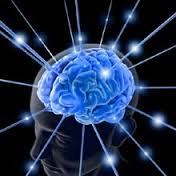Halting astrocytes at the GAT3
Uncontrolled inflammation in the brain after an injury has been shown to contribute to increased seizure risk and cognitive impairments. The thalamus is a brain area particularly susceptible to damage after an injury. Here, Cho and colleagues showed that thalamic inflammation per se was sufficient to trigger the negative effects of brain injury by modulating the expression of the GABA-transported GAT3 in astrocytes. Restoring the expression of the GABA-transported GAT3 in this cell population reduced the negative outcomes associated with brain injury, suggesting that targeting astrocytes in the thalamus might be effective for preventing negative outcomes after brain injury.
Abstract
Inflammatory processes induced by brain injury are important for recovery; however, when uncontrolled, inflammation can be deleterious, likely explaining why most anti-inflammatory treatments have failed to improve neurological outcomes after brain injury in clinical trials. In the thalamus, chronic activation of glial cells, a proxy of inflammation, has been suggested as an indicator of increased seizure risk and cognitive deficits that develop after cortical injury. Furthermore, lesions in the thalamus, more than other brain regions, have been reported in patients with viral infections associated with neurological deficits, such as SARS-CoV-2. However, the extent to which thalamic inflammation is a driver or by-product of neurological deficits remains unknown. Here, we found that thalamic inflammation in mice was sufficient to phenocopy the cellular and circuit hyperexcitability, enhanced seizure risk, and disruptions in cortical rhythms that develop after cortical injury. In our model, down-regulation of the GABA transporter GAT-3 in thalamic astrocytes mediated this neurological dysfunction. In addition, GAT-3 was decreased in regions of thalamic reactive astrocytes in mouse models of cortical injury. Enhancing GAT-3 in thalamic astrocytes prevented seizure risk, restored cortical states, and was protective against severe chemoconvulsant-induced seizures and mortality in a mouse model of traumatic brain injury, emphasizing the potential of therapeutically targeting this pathway. Together, our results identified a potential therapeutic target for reducing negative outcomes after brain injury.







